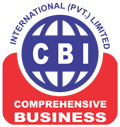Water Treatment in the Car Wash
Water recycling in car wash installations is practical, both from an ecological and an economic point of view. Unfortunately the danger of microbiological pathogens in the washing water is underestimated too frequently.

Washing cars out on the street has been restricted for a long time in many communities. The reasons for the restriction were mainly ecological considerations, because the washing water contains oils, lubricants, tar, suspended matter, heavy metals and micro-organisms, which often end up in soils and thus are a danger to the groundwater.
Car washing that is performed directly over a Gully pollutes the environment, since the dirty washing water can rinse out into surface waters through rainwater channels.
When cars are washed by hand much more fresh water is used than in a washing plant (see lower table).
Kind of car washing activity | Average drinking water consumption per car wash installation |
| Washing cars by hand with a hose | 400 liters |
| Conventional car wash installation | 150 liters |
| Car wash installation with water recycling system | 10-50 liters |
Cost-reduction with today’s drinking water prices and wastewater fees is quite high in a modern water recycling plant, because in such a system 75-90% of the fresh water that is required can be saved.
A system for sewage conditioning can consist of the following components:
– Neutralization plants
– Filtration units
– Flocculation units
– Biological treatment equipment
– Light media separator plants
– Emulsion gap plants
– A disinfection unit
The emulsion gap plant is mainly important for the background regulation of the new biological material.
Because industrial water in a car washing installation can be microbiologically contaminated, both the personnel and the customer must be protected against a possible health endangerment. This is particularly the case, when the contaminated washing water is sprayed in closed areas. People can inhale aerosols that are formed and this can cause infection with possibly dangerous bacteria and viruses, with people that have weakened immune systems.
The following recognized procedures are to be used for the disinfection of the water:
– Ozonization
– UV treatment
– Peroxide treatment
– Thermal treatment
Fungi, bacteria (such as Legionella) and viruses can be removed from the washing water with an electrical ozone installation, because ozone has a very strong germ-killing effect on such micro-organisms. An electrical ozone installation can easily be installed and it is very reliable. Contrary to disinfection with chlorine, ozone disinfection has no negative effects howsoever on the lacquer of the bodywork of cars.
Besides plants for water disinfection CBI also offers Reverse Osmosis systems. A Reverse Osmosis system can produce ultra pure water, which can be used to flush away marks in the car wash. Water that is treated in this way leaves no lime marks on the car lacquer while it dries up.
CBI can also provide the replacement membranes for these RO systems as well as the high pressure washer pumps from CAT and SPECK
